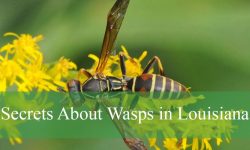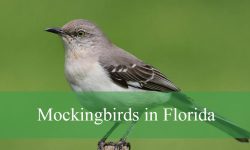Utah’s wide-ranging landscapes, from sunbaked desert canyons to lush alpine forests, provide excellent habitats that support a rich variety of hawk species. These powerful raptors are often seen gliding over open fields, perched on fence posts, or circling high above mountain ridges. Observing hawks in Utah can be an exciting and educational experience for anyone interested in birds of prey.
There are over a dozen species of hawks in Utah, each with its own unique characteristics, behaviors, and preferred habitats. Some are year-round residents, while others pass through during migration seasons. From the common Red-tailed Hawk to the elusive Zone-tailed Hawk, the diversity found across the state makes Utah a rich area for raptor identification.
This article introduces 12 different types of hawks in Utah, complete with pictures and identification tips. By understanding their markings, sizes, and habits, you’ll be better equipped to recognize these incredible birds throughout Utah’s varied landscapes.
Different Types of Hawks Found in Utah
Sharp-shinned Hawk (Accipiter striatus)
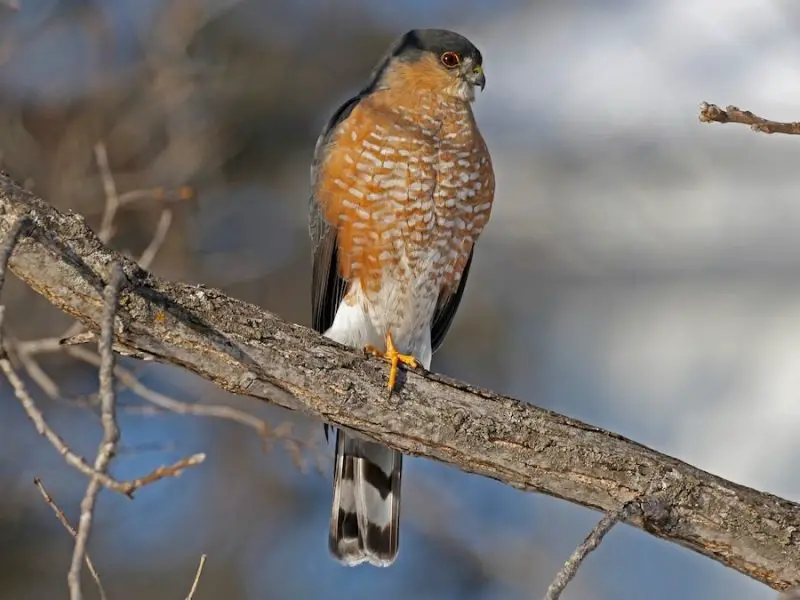
The Sharp-shinned Hawk is the smallest hawk in North America, known for its short, rounded wings and long, narrow tail with squared-off corners. Adults have blue-gray upperparts, reddish-orange barring on the chest, and a pale underside. Juveniles are brown with vertical streaks on a whitish belly. These hawks typically measure 9 to 13 inches in length with a wingspan of around 17 to 22 inches, and females are significantly larger than males.
This hawk is a fast, agile flyer that specializes in catching small birds in flight, often ambushing them in dense forests or backyard feeders. In Utah, Sharp-shinned Hawks are most often seen during spring and fall migration, especially in mountainous areas and wooded canyons. They prefer coniferous and mixed forests for breeding but will also travel through open country while migrating.
Their diet mainly consists of songbirds, such as sparrows, warblers, and finches, which they catch using stealth and speed. A fun fact about Sharp-shinned Hawks is their incredible flying agility—they can maneuver through thick branches at high speed in pursuit of prey, making them one of the most acrobatic hunters in the raptor world.
Cooper’s Hawk (Accipiter cooperii)
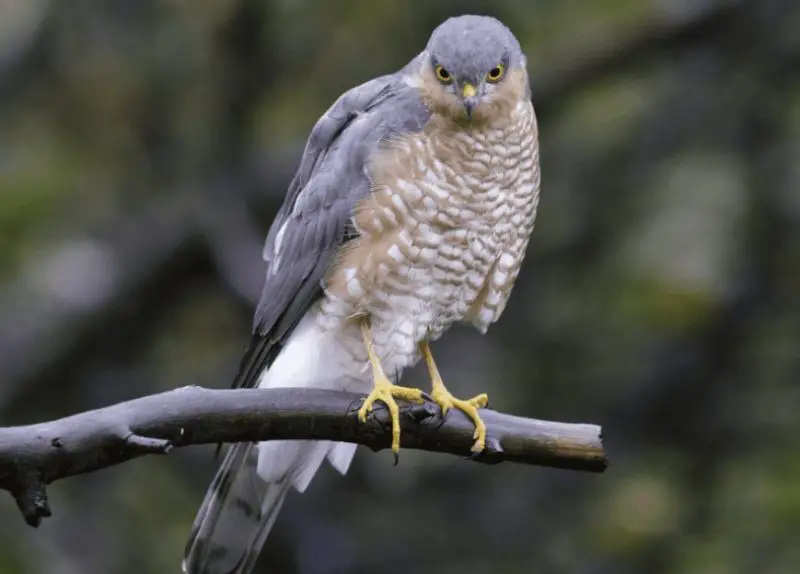
Cooper’s Hawk is a medium-sized bird of prey with a classic accipiter shape—broad, rounded wings and a long tail rounded at the tip. Adults have a steely blue-gray back, a reddish-barred chest, and dark cap on their heads. Juveniles are brown with streaky underparts. They typically measure 14 to 20 inches in length and have a wingspan ranging from 24 to 35 inches, with females being about a third larger than males.
Commonly found in Utah year-round, Cooper’s Hawks are well adapted to both wild and urban environments. They breed in mature forests, especially near water, but are increasingly found in suburbs, where they prey on songbirds at bird feeders. These hawks use surprise attacks, flying low and weaving through trees to ambush their prey.
Their diet primarily includes medium-sized birds like doves, starlings, and robins, along with small mammals such as squirrels and chipmunks. A fun fact is that Cooper’s Hawks were once called “chicken hawks” for their occasional habit of raiding poultry yards, although this behavior is relatively rare today.
American Goshawk (Accipiter atricapillus)

The American Goshawk is the largest of the North American accipiters and is distinguished by its broad wings, long tail, and powerful build. Adults are slate gray above with a light gray, finely barred underside and a striking white eyebrow that contrasts with their dark head. Juveniles are brown with bold streaks below. These hawks can grow up to 26 inches long with a wingspan of 40 to 46 inches.
In Utah, Northern Goshawks inhabit coniferous and mixed forests, particularly at higher elevations in the Wasatch and Uinta Mountains. They are secretive and rarely seen except during nesting season, when they fiercely defend their territory. Goshawks are agile hunters that rely on surprise and strength to catch birds and mammals in dense forests.
Their diet includes grouse, jays, snowshoe hares, and squirrels. A fascinating fact about the Goshawk is its fierce reputation—it is known for aggressively attacking intruders near its nest, including humans, earning it the nickname “the fighter jet of the forest.”
Swainson’s Hawk (Buteo swainsoni)

Swainson’s Hawk is a slender buteo with long wings and a short tail, easily recognized by its brown chest, white belly, and dark flight feathers. Adult birds have a distinctive two-toned appearance in flight, with dark underwings contrasting the pale body. These hawks measure between 18 to 22 inches in length and have a wingspan of about 48 inches.
This species is a summer resident in Utah, nesting in open areas such as grasslands, shrublands, and agricultural fields. Common in the Great Basin and western valleys, Swainson’s Hawks arrive in late spring and depart by early fall. They prefer nesting in isolated trees or utility poles and are often seen soaring or perching on fenceposts and wires.
Their diet shifts with the seasons: they primarily hunt small mammals like voles and ground squirrels during the breeding season but rely heavily on insects such as grasshoppers and dragonflies during migration. A fun fact is that Swainson’s Hawks undertake one of the longest migrations of any North American raptor—traveling over 6,000 miles to Argentina each year.
Red-tailed Hawk (Buteo jamaicensis)
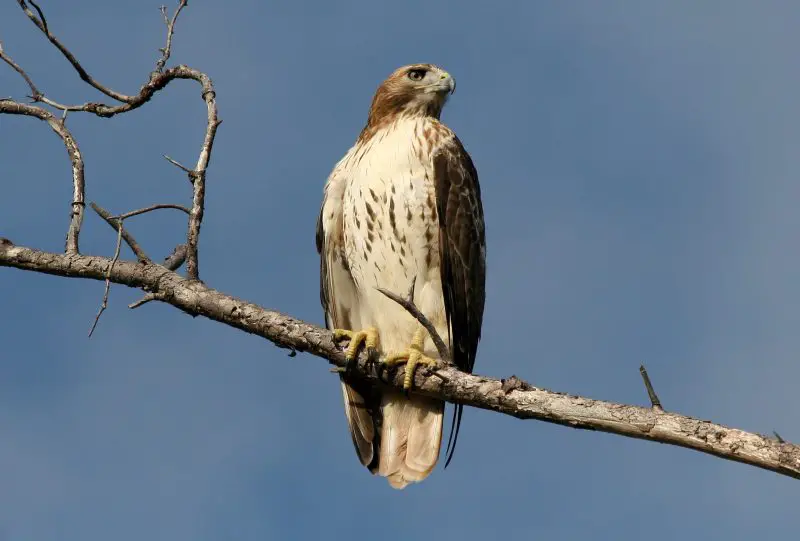
The Red-tailed Hawk is the most widespread and commonly seen hawk in Utah, easily recognized by its rich, reddish-brown tail in adults. These large hawks have a bulky body, broad wings, and a pale underside with a dark belly band. Plumage can vary significantly, with some individuals appearing almost all dark (melanistic morphs), but most have a warm brown back and streaked breast. They typically measure 18 to 26 inches in length with a wingspan of up to 52 inches.
This species thrives in diverse habitats, including deserts, grasslands, forests, and urban areas throughout Utah. It can be spotted year-round perched on telephone poles, fenceposts, or soaring overhead in wide circles. Red-tailed Hawks often use high perches to survey for prey and are especially vocal, giving a signature raspy scream often used in movies to represent any bird of prey.
Their diet mainly consists of small to medium-sized mammals, such as rabbits, squirrels, and voles, but they will also hunt birds and reptiles. A fun fact about the Red-tailed Hawk is that it forms strong pair bonds and often reuses the same nest for years, adding new sticks each season to reinforce their large platform nests.
Rough-legged Hawk (Buteo lagopus)
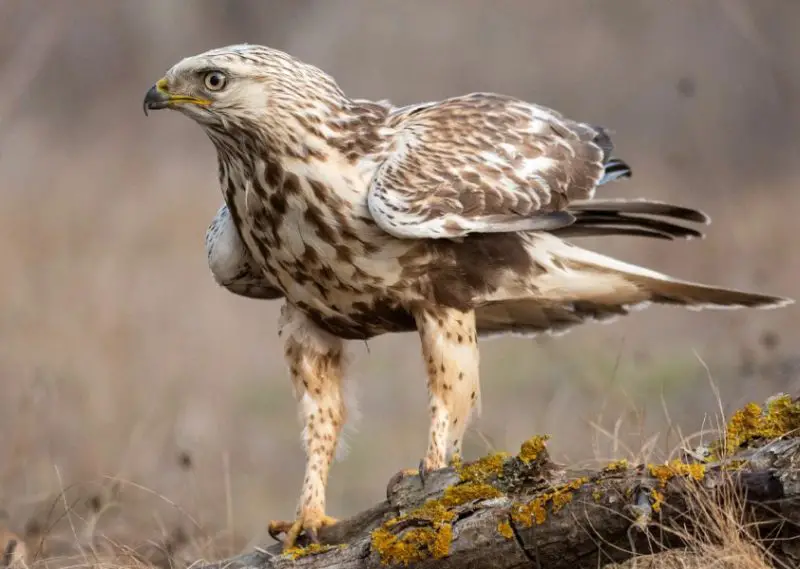
The Rough-legged Hawk is a large, long-winged raptor that visits Utah in the winter months, especially in the northern regions and open valleys. It is named for the feathers that extend down its legs, a unique adaptation among North American hawks for surviving cold climates. Adults show striking plumage patterns with pale heads, dark belly patches, and distinctive black “wrist patches” on the underwings. Their size ranges from 18 to 24 inches long with a wingspan of about 52 inches.
These hawks breed in the Arctic tundra but migrate south to winter in open country like Utah’s Great Salt Lake Basin and Cache Valley. They favor flat terrain where they can hover over fields in search of prey, a behavior uncommon among most other buteos. Rough-legged Hawks are relatively docile and often perch on low posts or fence lines near roadsides.
Their diet consists mainly of small mammals, particularly voles and mice, which they detect from great distances. A fun fact is that the Rough-legged Hawk is one of the few hawks capable of hovering in place like a kestrel—using the wind to remain stationary while hunting in open fields.
Ferruginous Hawk (Buteo regalis)
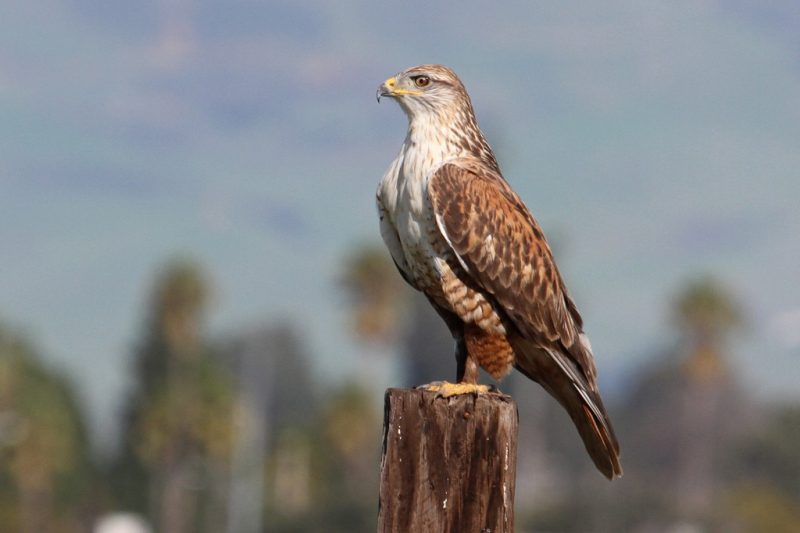
The Ferruginous Hawk is the largest hawk in North America and a year-round resident of Utah’s open country. It is named for its rust-colored (ferruginous) back and legs, though its coloration can vary between light and dark morphs. Light morphs have white underparts and a reddish back and shoulders, while dark morphs appear chocolate brown all over. These impressive raptors measure 22 to 27 inches long and have wingspans up to 56 inches.
This species inhabits prairies, deserts, and shrublands in Utah, preferring areas with little tree cover. They nest on the ground, on cliffs, or on large platforms built on isolated trees or power poles. Ferruginous Hawks are less common than Red-tailed Hawks but can be found in areas such as Utah’s West Desert, the Uinta Basin, and parts of central Utah.
Their diet is heavily focused on small mammals, especially prairie dogs, ground squirrels, and jackrabbits. A fun fact is that Ferruginous Hawks sometimes hunt in pairs—one bird flushes prey while the other waits to strike, showcasing a level of cooperation rarely seen in hawks.
Zone-tailed Hawk (Buteo albonotatus)
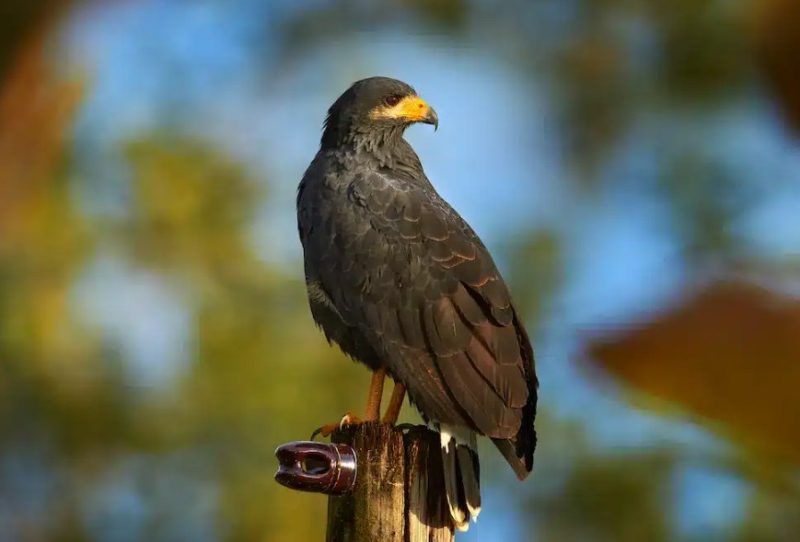
The Zone-tailed Hawk is a medium-sized raptor with striking black plumage and white bands (or “zones”) across its tail, which gives the species its name. In flight, it resembles a Turkey Vulture with long wings held in a dihedral and a slightly rocking motion, but it can be identified by its broad white tail bands and feathered legs. Adults measure about 18 to 22 inches in length with a wingspan of around 48 to 56 inches.
In Utah, this hawk is a rare breeder, typically found in the southern part of the state, especially in canyonlands and desert riparian zones. They prefer rugged terrain with open woodlands or rocky canyons, often nesting near streams or cliffs. Zone-tailed Hawks are elusive and often overlooked due to their vulture-like flight pattern, which helps them stealthily approach prey.
Their diet includes small mammals, reptiles, birds, and amphibians. A fascinating fact is that Zone-tailed Hawks mimic the flight of Turkey Vultures to sneak up on unsuspecting prey, blending into flocks of vultures to mask their identity as a predator.
Common Black Hawk (Buteogallus anthracinus)

The Common Black Hawk is a broad-winged raptor with mostly black plumage, a short tail marked by a single broad white band, and yellow legs and cere. It is stocky and medium-sized, measuring about 19 to 21 inches in length with a wingspan around 50 inches. Its robust build and slow, deliberate wingbeats give it a unique flight style compared to other hawks.
In Utah, this species is a rare and local breeder, mainly restricted to the Virgin River system in the southwestern corner of the state. It relies heavily on riparian habitats with mature cottonwoods and sycamores near permanent water sources. Nesting sites are usually in tall trees close to streams where food is abundant.
Its diet mainly includes aquatic and semi-aquatic animals such as fish, frogs, crayfish, and snakes. A fun fact is that Common Black Hawks are territorial and often reuse the same nest for many years, building huge stick platforms high in large trees near water.
Gray Hawk (Buteo plagiatus)
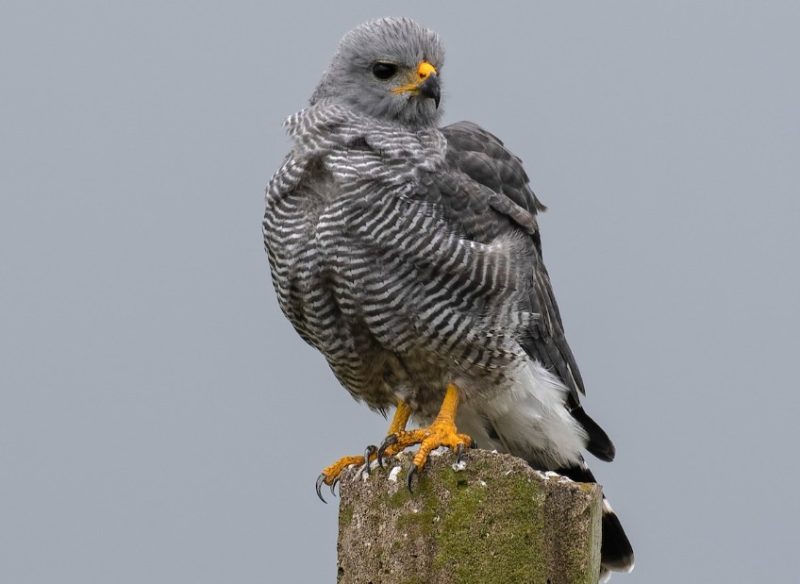
The Gray Hawk is a small buteo with finely barred gray plumage, a white undertail with broad black bands, and a slender build. Adults are pale gray overall with darker barring on the chest and belly, while juveniles are brown with streaked underparts. They measure around 16 to 24 inches long and have a wingspan of approximately 35 to 40 inches.
In Utah, Gray Hawks are considered extremely rare, occasionally seen in the far southern regions during migration or as vagrants. They typically inhabit riparian woodlands in the desert Southwest, especially areas with cottonwood and mesquite near water. This species is more commonly found in southern Arizona and New Mexico but may occasionally wander into Utah’s suitable habitats.
Their diet consists mainly of lizards, small mammals, and large insects. A unique fact is that Gray Hawks often hunt from a low perch, diving quickly to the ground to catch prey, and their whistling call is a common sound in their preferred riparian woodland range.
Red-shouldered Hawk (Buteo lineatus)

The Red-shouldered Hawk is a medium-sized hawk known for its striking reddish-brown shoulders, black-and-white checkered wings, and strongly banded tail. Adults display a warm rufous coloration on the chest, while juveniles are more brown and streaky. These hawks typically measure 17 to 24 inches in length with a wingspan of about 37 to 43 inches.
In Utah, the Red-shouldered Hawk is considered a rare visitor, primarily spotted during migration or as an occasional vagrant. Their usual range includes the eastern and coastal regions of the U.S., but small populations have been slowly expanding westward. If found in Utah, they are most likely to be seen in wooded wetlands, bottomland forests, or riparian corridors.
They feed on amphibians, reptiles, small mammals, and insects, often hunting from a perch and swooping down to seize prey. A fun fact is that their loud, repetitive call—often described as a whistled “kee-aah”—is one of the most distinctive hawk vocalizations and frequently used in film soundtracks to represent birds of prey.
Broad-winged Hawk (Buteo platypterus)
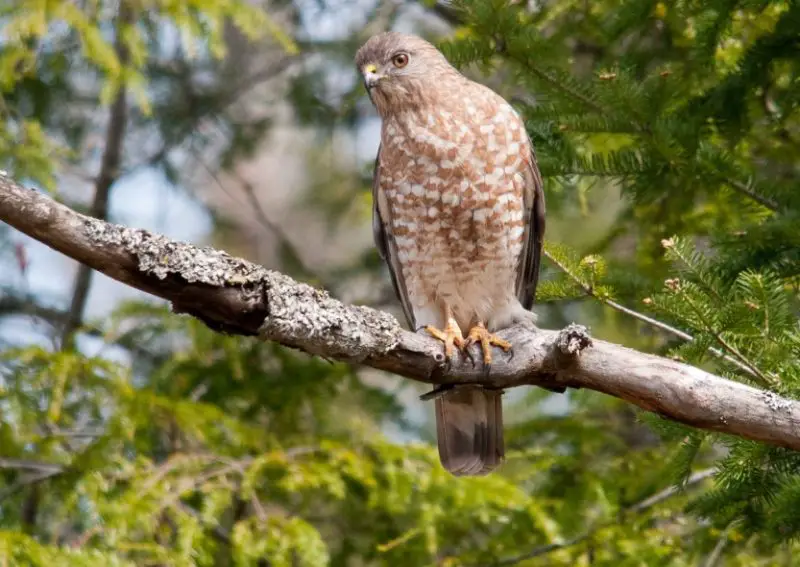
The Broad-winged Hawk is a small, compact buteo with broad wings, a short tail with distinct black and white bands, and a pale underside with subtle barring. Adults are generally brown above with a light chest and white belly. These hawks range in size from 13 to 17 inches in length, with a wingspan of about 32 to 39 inches.
In Utah, the Broad-winged Hawk is a rare and primarily migratory visitor, most likely seen during spring and fall migration. It is not a regular breeder in the state but may pass through forested areas and mountain ridges while on its long-distance journey. Look for them in areas with dense deciduous woodlands during migration peaks.
Their diet consists of small vertebrates, including frogs, rodents, insects, and birds, and they typically hunt from perches within forests. A remarkable fact about the Broad-winged Hawk is its participation in massive migratory flocks called “kettles,” where hundreds or even thousands of birds soar together on thermals during migration, creating a spectacular aerial display.


